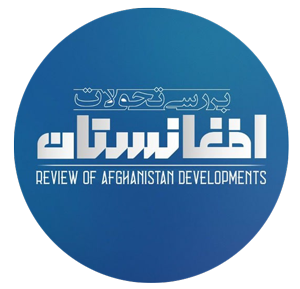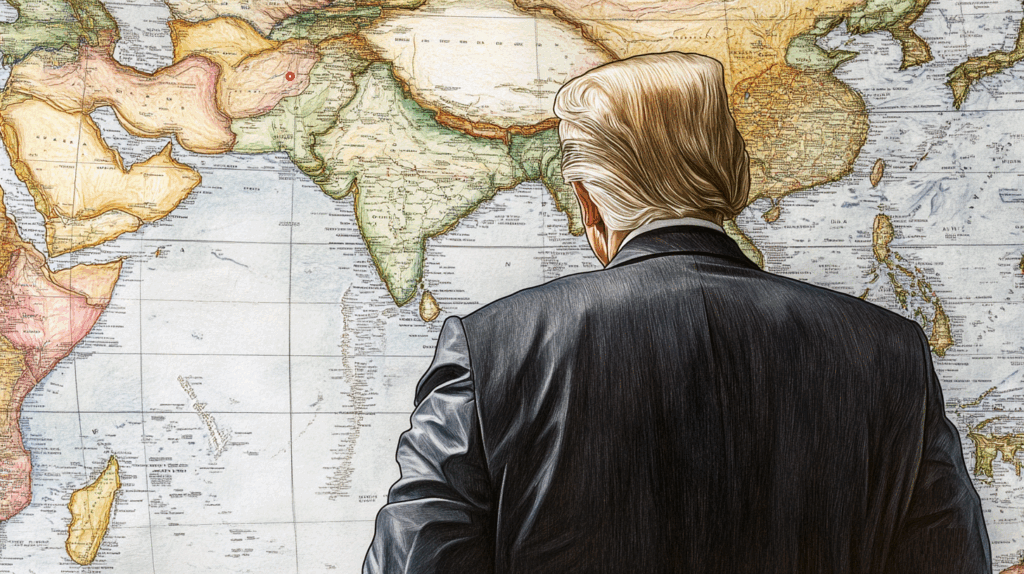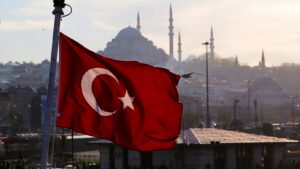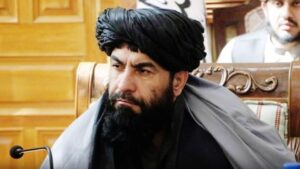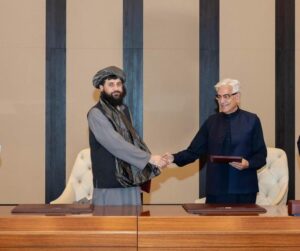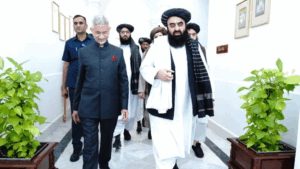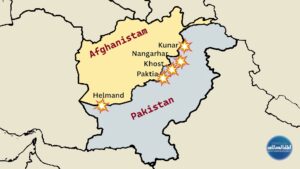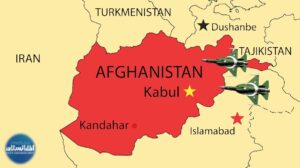Review of Afghanistan developments
Recent conversations regarding the United States’ efforts to reclaim Bagram Air Base have once again placed the facility at the center of political and security discussions on both regional and global scales. US President Donald Trump has reiterated twice in the past week that Washington is working to regain control of Bagram, even mentioning in his remarks the potential punishment for Taliban’s opposition to this matter; comments that elicited a strong response from Taliban government officials, who dismissed any notion of transferring the base back to the United States. This exchange of words, while appearing to be a typical aspect of political disputes, actually reveals significant insights into Afghanistan’s geopolitical significance within the broader strategies of world powers and the Taliban government’s ability to navigate external pressures.
Situated 70 kilometers from Kabul, Bagram has functioned as a strategic center for many years, initially during the Soviet invasion of Afghanistan and subsequently throughout the 20-year U.S. presence in the country following the September 11 attacks. In the last two decades, Bagram has acted not only as a center for military operations, troop and equipment transfers, and intelligence mission coordination, but it has also become a representation of American influence and presence in Afghanistan. Consequently, the conversation surrounding a potential return of the United States to this military base transcends mere tactical considerations; it also embodies the geopolitical rivalries and the reconfiguration of power dynamics in the region.
This note seeks to explore inquiries regarding the role of Bagram, the reasons behind America’s desire to assume control of this base, and the potential implications of such a return for the Taliban government and the surrounding nations, through a comprehensive analysis, while also investigating the different military, political, and geopolitical aspects of the matter.
The geopolitical and geostrategic function and importance of Bagram
Bagram Air Base, situated in Parwan Province, is regarded as one of the most crucial installations in Afghanistan’s contemporary history from both geopolitical and military viewpoints. Owing to its advantageous geographical position, the base offers surveillance, intelligence, and operational coverage across all of Afghanistan as well as portions of Central, South, and West Asia. In this regard, it significantly influences the regional balance of power and security strategies.
The Bagram facility is constructed to offer simultaneous multi-layered military and intelligence functionalities: two runways measuring 3,500 and 3,200 meters facilitate the operation of heavy transport aircraft and strategic fighters; numerous ammunition depots, aircraft and helicopter repair and maintenance facilities, along with advanced radar and satellite stations, form the foundation for military, intelligence, and espionage activities.
The operational and security aspects of this military base are demonstrated by its swift response capability and special operations command. While American forces were stationed in Afghanistan, this base facilitated the quick deployment of troops to essential locations within Afghanistan and the borders of neighboring countries in under an hour’s flight; a capability that is crucial for executing intricate missions at the regional level.
From a geopolitical standpoint, Bagram holds a crucial role in the United States’ network of regional influence. It offers direct access to critical regions in Iran, Pakistan, Central Asia, and sections of western China, establishing it as a significant leverage point in the broader competition. Additionally, Bagram’s closeness to key transit routes further enhances its status as a vital command and control hub.
Consequently, the potential reestablishment of America’s presence at this base is viewed not merely as a tactical maneuver, but also as a strategic reconfiguration on both regional and global scales.
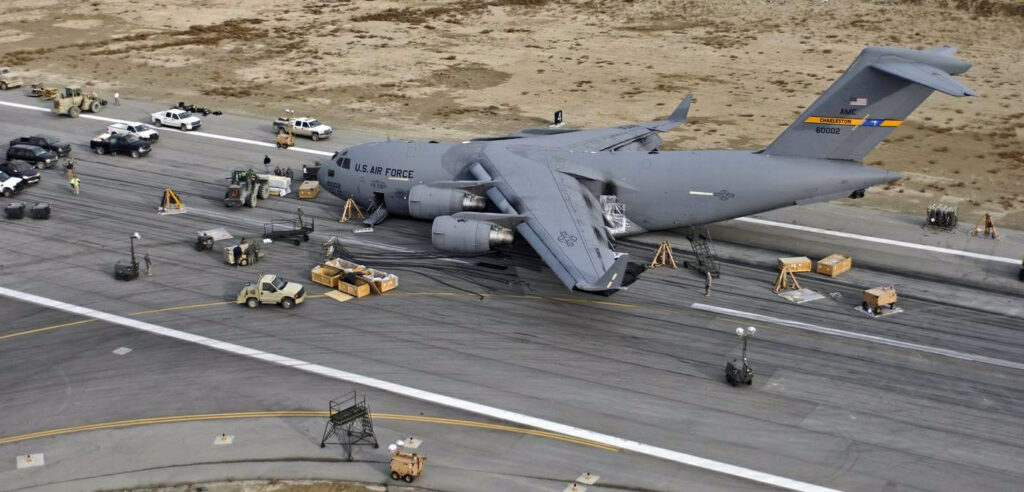
Factors contributing to Trump’s desire to return to Bagram
Trump’s interest in returning to Bagram is driven by multiple factors. Domestically, this appears to be a display of power on Trump’s part, serving a political purpose. He aims to reinforce his image as a strong leader within the United States’ domestic dialogue through such assertions, leveraging this issue against the Democratic Party, which he accuses of having surrendered Bagram to the Taliban. Nevertheless, the initial domestic responses, particularly from military experts knowledgeable about Afghan matters, have been negative and concerning due to the potential repercussions of such a decision.
From an outside viewpoint, Trump’s desire to return to Bagram encompasses both geopolitical and geostrategic aspects. By reinstating the US presence at this base, Trump aims to convey to regional nations, such as China, Russia, and Iran, that the US exit from Afghanistan does not signify a diminishment of Washington’s global power influence; instead, it represents a chance to realign power and exert renewed pressure. A philosophical examination of this move indicates that this request serves as a mechanism for influencing perception and applying psychological pressure on both regional and global scales.
The Taliban government reaction to Trump’s remarks regarding a return to Bagram
Since regaining control, Taliban officials have asserted that the return of foreign troops to Afghanistan constitutes their red line. In a 2023 interview with Tolo News, Amir Khan Muttaqi, the Taliban’s foreign minister, stated that even if the United States acknowledges the Islamic Emirate and undertakes the reconstruction of Afghanistan, we will not surrender Bagram, nor any part of Afghan territory. Fasihuddin Fitrat, the chief of staff of the Afghan armed forces, declared in a speech on Sunday, September 21, 2025, that the Islamic Emirate will never compromise its land and will not engage in any trade regarding its territory. In reaction to Trump’s threats, he remarked that we will not engage in such a disgraceful agreement that would undermine the sacrifices of the martyrs, and we are prepared to make sacrifices for this principle.
An in-depth examination illustrates that the Taliban authorities’ refusal to hand over Bagram to the United States is based on various reasons. The initial reason is ideological. From a doctrinal perspective, the Taliban has been engaged in nearly two decades of warfare aimed at liberating Afghanistan from foreign occupation, convincing its fighters through jurisprudential rules that advocate for resisting the aggressor. How can it now be permissible for the US military to return to Bagram? It is evident that any agreement for the US to regain access to this strategic military base would result in a significant schism within the Taliban forces, with those opposing to likely align ISIS Khorasan. In addition, there are numerous ideological grounds for rejecting any negotiations concerning the US military’s return to Afghanistan, including the rule of negation of the mustache.
The second rationale for opposing the transfer of Bagram to the United States stems from a thorough comprehension of the surrounding environment. The Taliban government is acutely aware that this action will provoke responses from neighboring countries. The sixth Moscow format meeting, recognized as one of the most significant regional frameworks, addressed the matter of the return of foreign troops to Afghanistan in its concluding statement. This statement asserted that “efforts by third countries to establish military infrastructure in Afghanistan are unacceptable, as this does not align with the interests of peace and stability in the region.” Russia, China, Iran, and even Pakistan vehemently oppose the re-entry of American forces into Afghanistan, and should such an event transpire, their relations with Afghanistan, if not severed, will revert to the dynamics of the republican era.
The situation is complicated by the fact that Trump has now entered a phase characterized by pressure and threats. This emotional approach and behavior are creating political tension between the two countries. The Taliban government must navigate this issue to, on one hand, shield Afghanistan from the repercussions of Trump’s ire, while on the other hand, maintaining regional support and a favorable perception.
The regional countries’ stance
The stance of the countries in the region are not merely political responses; they are also shaped by historical context, strategic interests, and tangible threats. Iran is unequivocally against the US presence in Afghanistan, as this presence poses a potential risk to the security of its eastern borders and, by extension, to Iran itself. For instance, there is compelling evidence indicating that Abdulmalek Rigi, the leader of the terrorist organization Jaish al-Adl, has traveled to and from Bagram base, and the American drone (RQ-170) that was downed in Iran originated from Kandahar air base. China shares these concerns, particularly since Trump has made it clear that Bagram base is in close proximity to China and that he plans to utilize this base to surveil and potentially threaten China. Russia is similarly apprehensive about the US potentially repeating historical patterns of geopolitical maneuvering using Afghan territory, believing that Washington and its European allies might exploit extremist groups to exert pressure on Moscow, thereby destabilizing Central Asia, which is a neighboring region to Russia. Consequently, the opposition from these nations arises from a multifaceted web of security threats emanating from Afghan territory due to US actions.
Advice to the Taliban government
While it is extremely improbable that the Taliban government will succumb to America’s temptation to relinquish the Bagram base, given that the Islamic Emirate is not an American puppet preoccupied with a survival crisis and has proven itself in combat, it is important to note that the republican system serves as a significant lesson for Afghanistan’s leaders regarding the unreliability of American agreements. The United States had entered into two strategic and security pacts with the republican system; however, when its own interests were threatened, it deserted Afghanistan without any consideration for these accords.
Furthermore, over the last four years, it has been these nations in the region that have aligned themselves with the Islamic Emirate through engagement, and now Washington, seeking to intimidate these nations, plans to request Bagram from Kabul. Historical evidence indicates that any administration unable to adjust to its regional-external environment will inevitably encounter a crisis of survival.
Related Articles
U.S. security-focused Agenda towards the Taliban
Arab countries’ potential role in US-Taliban mediation
Conclusion
Recently, Taliban leader Mullah Haibatullah Akhundzada labeled the United States as a “great tyrant” in a statement regarding the Gaza war. Currently, the same nation is preparing to re-enter Afghanistan with the intention of utilizing the Bagram base for security and military operations against neighboring countries and potentially against Afghans. This return will place the Afghan leaders in a challenging position: deciding between the regional nations or the United States. Any accord between Kabul and Washington on this matter will certainly have significant implications for its relationships with regional powers.
Senior Taliban officials have unequivocally and transparently dismissed Washington’s request and have countered Trump’s threat with their own. At present, there is no indication or evidence suggesting that the Taliban government is prepared to relinquish Bagram to the United States, and it seems improbable that any such agreement will be established in the future unless there is a transformation within the Taliban government, which would then no longer be referred to as a ‘Taliban’ government.
Follow us in Social Media
X Facebook
